#Kerala Express
Explore tagged Tumblr posts
Text
Four workers die after being struck by Kerala express near Palakkad | India News - Times of India
NEW DELHI: Four sanitation workers lost their lives after being struck by Kerala express near Palakkad, according to news agency PTI quoting railway authorities.The police said that the Kerala express, bound for Thiruvananthapuram, struck four sanitation workers near Shoranur Railway Station while they were clearing garbage from the railway track near the Shoranur bridge, just a few kilometers…

View On WordPress
#Bharathapuzha River#Breaking news#Google news#India#India news#India news today#Kerala Express#Palakkad#PTI#sanitation workers#Shoranur Railway Station#Today news#Train Accident
0 notes
Text
"kashmir tu, mein kanyakumari-"
IF YOU'RE KANYAKUMARI WHY DOES IT LOOK LIKE YOU'RE IN KOCHI
#no offence to people who live or are from kochi#its just that they're supposed to be in tamil nadu but they're doing fucking mohiniyattam and kathakali???#two very kerala dance styles ???#adri is not making sense#chennai express
24 notes
·
View notes
Text
വന്ദേ ഭാരതിലെ ഭക്ഷണത്തിൽ ചത്ത പാറ്റ; ഖേദം രേഖപ്പെടുത്തി ഇന്ത്യൻ റെയിൽവേ
വന്ദേ ഭാരതിലെ ഭക്ഷണത്തിൽ ചത്ത പാറ്റ; ഖേദം രേഖപ്പെടുത്തി ഇന്ത്യൻ റെയിൽവേ
ഡൽഹി: വന്ദേ ഭാരത് എക്സ്പ്രസിൽ നൽകിയ ഭക്ഷണത്തിൽ പാറ്റയെ കണ്ടെത്തിയ സംഭവത്തിൽ ഇന്ത്യൻ റെയിൽവേ കാറ്ററിംഗ് ആൻഡ് ടൂറിസം കോർപ്പറേഷൻ (ഐആർസിടിസി) ഖേദം രേഖപ്പെടുത്തി. വന്ദേ ഭാരത് എക്സ്പ്രസിൽ ഭോപ്പാലിൽ നിന്ന് ആഗ്രയിലേക്കുള്ള യാത്രയ്ക്കിടെയാണ് ദമ്പതികൾക്ക് ഭക്ഷണത്തിൽ നിന്ന് പാറ്റയെ കിട്ടിയത്. തന്റെ അമ്മാവനും അമ്മായിക്കും വന്ദേ ഭാരത് എക്സ്പ്രസിൽ യാത്ര ചെയ്യവേ ലഭിച്ച ഭക്ഷണത്തിൽ നിന്ന് പാറ്റയെ കിട്ടിയെന്ന്…

View On WordPress
0 notes
Text
Air India Express adds international flights this summer, focus on Kannur
Air India Express – the low cost arm and a fully owned subsidiary of Air India is expanding operations this summer. The airline started receiving the first of 190 MAX aircraft towards the end of last year and since then it has been expanding selectively, largely on domestic routes taking on IndiGo on its monopolies and in the process launched flights to Gwalior and Ayodhya. As part of its…

View On WordPress
0 notes
Text

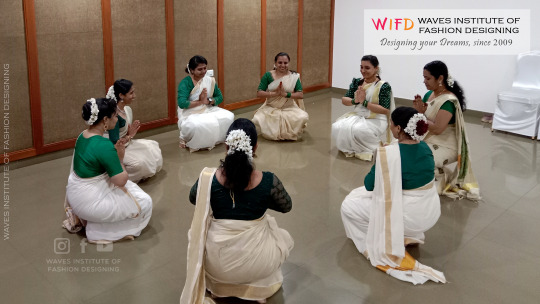
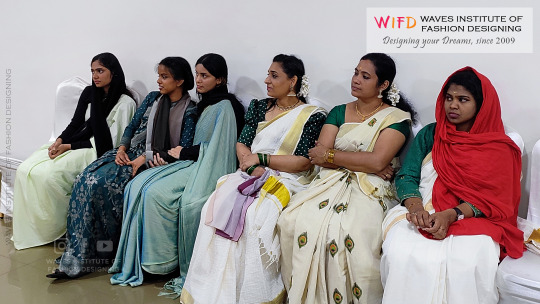
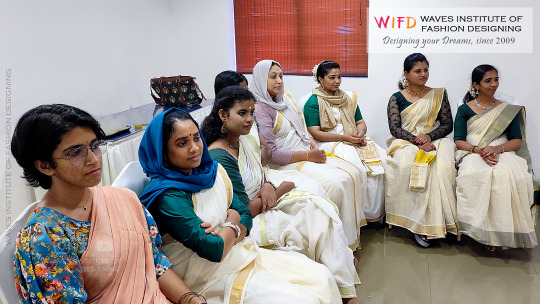
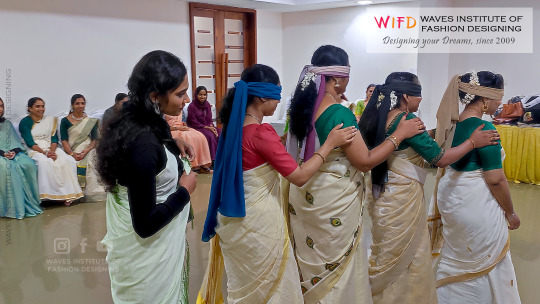
𝐂𝐚𝐩𝐭𝐮𝐫𝐢𝐧𝐠 𝐭𝐡𝐞 𝐂𝐨𝐥𝐨𝐫𝐬 𝐨𝐟 𝐎𝐧𝐚𝐦: 𝐀 𝐅𝐚𝐬𝐡𝐢𝐨𝐧𝐚𝐛𝐥𝐞 𝐅𝐞𝐬𝐭𝐢𝐯𝐞 𝐄𝐱𝐭𝐫𝐚𝐯𝐚𝐠𝐚𝐧𝐳𝐚!
Glimpses from our vibrant Onam Celebration on Aug 23, 2023! Fashion Designing students brought the essence of this joyful festival to life through their creative flair. Stay tuned for more highlights!
Greetings, Waves Institute of Fashion Designing
#Onam Vibes#Fashion Fiesta#Onam Celebration#Fashion Designing#Festive Creativity#Waves Institute#Colorful Traditions#Creative Expressions#Student Showcase#Joyful Festivities#Onam 2023#WIFD#Kerala Culture#Fashion Students#Kozhikode
0 notes
Text
TVC KGQ Vande Bharat Stoppage Station, Fare and Timing
TVC KGQ Vande Bharat is Kerala’s first Vande Bharat train that will be flagged off by prime minister of India Narendra Modi tomorrow. Prime Minister Narendra Modi on Tuesday will launch Kerala’s first Vande Bharat Express, which will run between Thiruvananthapuram and Kasargod, starting from Thiruvananthapuram Central Station. TVC KGQ Vande Bharat is known as Kerala’s first Vande Bharat and…

View On WordPress
0 notes
Photo

Family and happiness together in a picture.❤️ PunyalanS weddings ©2022 #weddingfilmer #makeover #weddinginspiration#weddingceremony #pride #bridalwear #adventurealways#weddingphotos #photooftheday#loversunited#nature #weddingideas#weddingplanner #prewedding #expression#weddingblog #couplegoals #instaweddings#instalove #kerala #CapturedOnCanon @canonindia_official @keralaweddingstyle._ @keralawedding_styles @keralaweddingstyle._ @mallu.weddings (at Kayamkulam) https://www.instagram.com/p/ChZ9YaHvpZ8/?igshid=NGJjMDIxMWI=
#weddingfilmer#makeover#weddinginspiration#weddingceremony#pride#bridalwear#adventurealways#weddingphotos#photooftheday#loversunited#nature#weddingideas#weddingplanner#prewedding#expression#weddingblog#couplegoals#instaweddings#instalove#kerala#capturedoncanon
0 notes
Text
Creation of the Pan Flag

Copied (with grammar/spelling mistakes) from my twitter thread about it for posterity.
I was going to do this for Pride weekend but you know, life, so: I wanted to talk about a thing. I created the #pansexual flag, a thread.
Back in 2010, I was 20 and tumblr was my main social playground. I was active in various spheres, and I was learning.
I'd been IDing as bi since I was 13, but moved away from bi as an identifier and took up pansexual soon after discovering the term, bc I felt it fit better.
This is mainly bc the simplicity of pan being defined as attraction to any/all genders was extremely appealing to someone really coming into this new way of expressing their orientation like tumblr allowed. It felt right for how I wanted to relate to and express my orientation.
The bi communities I had access too often saw heavy discussion related to attraction parametres of "bi" - convos at the time I didn't really recognise for what they were: bi people working hard to define bisexuality on their terms, tackling intra-community transphobia, (cont)
(cont) and developing within a social space where more expansive gender experiences and identities were becomes more well known and understood.
My switch of labels was about finding something that felt truly right for me, but it would be dishonest to pretend the decision wasn't impacted by the politics and "discourse" I was involved in at the time.
There was no popular pan flag, and the offerings were frankly... ugly. To me. Various shades of purple, P letters, P symbols incorporating gender symbols, infinity symbols. They didn't feel consistent with the other pride flags.
So on a whim, I decided to design one. I designed it to be pretty, honestly. That was a primary function of it, to have s/t I liked to represent my identity. No point pretending I was trying to be super innovative and deep: I wanted something pretty to plaster on my blog.
Pink, yellow, blue. A strong magenta, a strong gold yellow, and a light cerulean. The pink not too purple, the yellow not too bright, the blue not too cyan. Hex FF1B8D, FFD900, 1BB2FF.
Pink and blue, because of their gendered traditions, and yellow, a generally non-gendered colour, to represent nonbinary folks etc.
I created it anonymously, on a side blog away from my main handle. I was already running LGBTLaughs which was proving very popular in tumblr and didn't want to monopolise queer blog space, I suppose.
I didn't expect it to take off. It proved popular on tumblr, and for a few years the flag kept getting added to the Wikipedia 'pansexual' page and then removed. Eventually it snowballed and ended up in use well beyond tumblr.
As I've got older I've realised a lot of people would be interested in knowing this part of modern queer history, and more about modern flag creation in general, and that it's worth documenting. Not for credit so much as for posterity.
So, that's that. The first time I saw a pansexual flag in real life at my city's Pride parade I may have had a little cry.
Twitter Drama
Best viewed on the original twitter thread, for the full documentation (I may update this with fuller documentation down the line) but here's a rundown of drama surrounding the flag.
First, to set the stage:
posted about designing the pan flag
said i was cool with bi/pan lesbians
said i was cool with kink at pride
Thus followed, in varying intensity 2020-2022:
misgendering
suicide bait
general harassment/pile-on
"called out" on r/pansexuals
blasted on sapphics for satan (fb)
now sworn enemy of of lesbian kpop avi twitter
claims the original pan flag was transphobic in meaning
multiple "new" pan flags designed to displace the one i designed
claims i stole the flag from a medieval indian kingdom, and subsequent vandalisation of wikipedia for the actual state of kerala
vandalisation of the wiki page for the pan flag, resulting in it having to be locked
106 notes
·
View notes
Text
DAY 5694
Jalsa, Mumbai Sept 19, 2023 Tue 9:50 pm
Message from Ef :
Sir, I feel sad to inform you that Ms SATINDER BORAYA, very old member of EF from DELHI-NCR is no more. She was always part of Delhi EF meets.
Her daughter informed over phone in the fotenoon today that Satinder ji passed away on Sunday Morning due to age related complications and ailments.
Prayers and condolences for the noble soul.
🙏
we express our prayers and deepest condolences to her family .. i had very memorable meetings with her in Delhi during my visits .. 🙏
*
It is most difficult to continue to express normalcy after a grief .. but life is strange and continues regardless .. each day brings a different hemisphere of life's bearings, and we learn each moment the immense givings of its value to us al living and non living beings ..
We pray for normalcy for all, we desire that each one of us never has to go through the trials that life throws upon us and we hope that it remains just and happy for us ..
❤️
It is the season of festivity .. of Navratri .. of celebration .. of bringing together the variety of our 'sanskaar' संस्कार of our age old traditions and beliefs .. and in keeping with the diversity but in its unity .. we design the KBC with the different traditional wear from each part of the country ..
and for me the 'veshti' the traditional wear of Kerala .. a moment of pride and joy ..
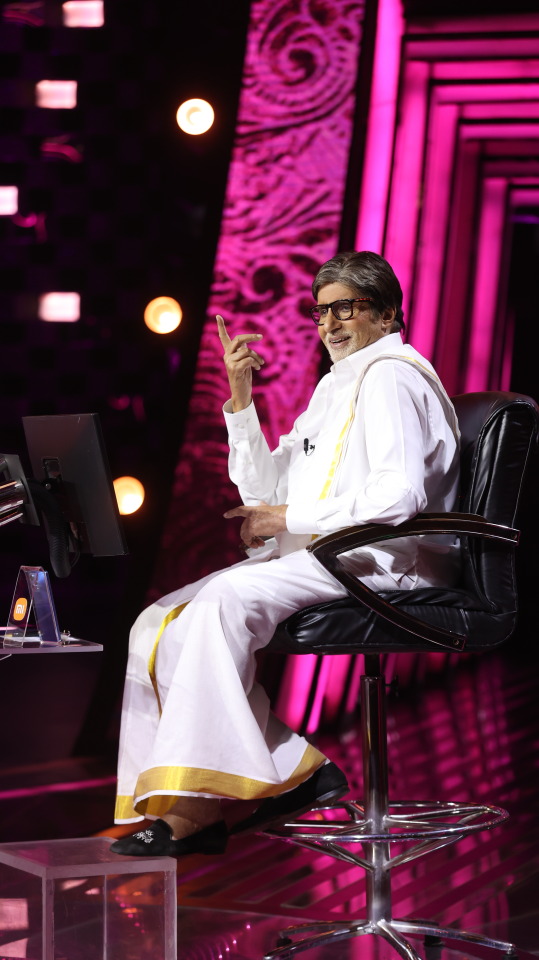
may there be peace and love and all the goodness to prevail on this celebratory day of the ganapati sthapana ..
May HE keep us under his care , keep us protected ever .. and bless us all
Love and wishes ..
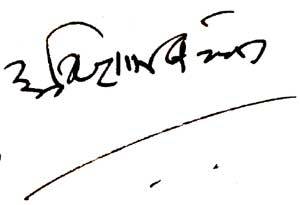
Amitabh Bachchan
138 notes
·
View notes
Text
Kali - काली

Kali is a complex and powerful Hindu goddess known for her transformative, fierce, and protective qualities. She is often associated with destruction, time, death, and rebirth, but also with liberation and empowerment. Here’s a detailed look at Kali:
Origins and Background:
Name: Kali’s name comes from the Sanskrit word “Kala,” meaning time. She represents the inevitable nature of time, change, and transformation. In some interpretations, she is also linked to "black" or "dark," symbolizing the primordial void from which creation springs.
Origins: Kali is a form of the goddess Durga, who is often invoked for protection and strength. In Hindu mythology, she was born from Durga’s anger when the goddess needed an even more powerful force to defeat demons. Her energy (shakti) manifested as Kali, who easily destroyed the demonic forces threatening the world.
Region: Kali is venerated throughout India, especially in Bengal, Assam, and Kerala, as well as in Nepal. Her worship has spread globally due to her potent symbolism of power and liberation.
Iconography and Symbols:
Appearance: Kali is often depicted with dark skin (sometimes black or blue), wild hair, a fierce expression, and four arms. She typically holds a sword (symbolizing divine knowledge), a severed head (representing the ego), and a bowl (to catch blood, signifying life). She wears a necklace of skulls, a skirt of severed arms, and her tongue protrudes—often interpreted as her uncontainable nature.
Consort: Kali is often shown standing on the prostrate body of Shiva, her consort, symbolizing that even destruction (Kali) is subject to the higher cosmic order (Shiva). This represents the balance between creation and destruction.
Kali’s Attributes and Symbolism:
Destruction: Kali is often associated with the destruction of evil, ignorance, and ego. Her fierce form represents the dismantling of illusions and attachments, making space for transformation and rebirth.
Liberation (Moksha): Kali helps her devotees move beyond worldly illusions and ego-driven desires, leading to spiritual liberation. She helps destroy the barriers to self-realization, showing her aspect as a mother who can be both terrifying and nurturing.
Time and Death: Kali represents time (Kala), the unstoppable force that eventually brings about death and transformation. However, she is not death itself but the remover of the fear of death, showing that death is a part of the cosmic cycle.
How to Communicate and Work with Kali:
Approach with Respect: Kali’s energy is intense, so it’s essential to approach her with humility and sincerity. She is not a goddess to invoke lightly, as she may challenge you to confront deep truths about yourself and your life.
Offerings: Common offerings to Kali include red flowers (especially hibiscus), fruits, incense, and red clothing. Devotees also offer food, sweets, and liquor (such as rum) in some traditions.
Mantras and Prayers: One way to honor Kali is through mantras. A well-known mantra is “Om Krim Kalikayai Namah,” which invokes her protective and transformative energy. You can chant it during meditation or when seeking her guidance.
Meditation and Visualization: Meditate on Kali’s image, focusing on her fierce yet liberating nature. Visualize her cutting away the illusions or fears that hold you back. Though her energy is powerful, she ultimately provides protection and strength.
Days of Worship: In some traditions, Kali is worshiped on Saturdays or during the new moon (Amavasya), a time associated with endings and new beginnings. The most significant festival for Kali is Kali Puja, celebrated during the Hindu festival of Diwali, especially in Bengal.
Things to Consider When Working with Kali:
Transformation and Shadow Work: Kali often helps those who are ready to confront their own shadows—the parts of ourselves we hide or fear. Her energy can prompt deep introspection and release, which may be intense but is ultimately healing.
Facing Fear and Ego: If you work with Kali, you might find yourself in situations where you are forced to confront your fears or break down attachments to ego-driven desires. This can be uncomfortable, but it’s a path to personal growth and liberation.
Protection: Kali is a fierce protector of her devotees. If you are dealing with challenges, feeling vulnerable, or need courage, Kali’s energy can be invoked to help you stand strong and face adversity.
Destruction as Renewal: Kali’s destructive aspect is also about clearing away what no longer serves you. This could mean relationships, old patterns, or limiting beliefs. Working with her can bring about significant life changes.
How to Honor Kali:
Rituals: You can create a small altar to Kali, where you place her image or statue, alongside offerings. Light candles or oil lamps, and offer incense, reciting mantras or prayers.
Self-Reflection: Since Kali helps in breaking down the ego, engage in regular self-reflection. Journaling about your emotions, fears, and goals can be a powerful practice.
Facing Your Shadows: Work on facing your fears, and be open to Kali’s lessons about impermanence and transformation. Accepting difficult aspects of life (such as loss or failure) can be part of honoring her.
Serve Others: Since Kali is both a destroyer and nurturer, acts of service, especially toward those in need or suffering, can be a way of embodying her compassion.
Working with Kali Spiritually:
Caution with Intensity: Kali’s energy is transformative but intense. She can push you toward personal evolution quickly, sometimes in ways that may feel like you are being “torn down” to be rebuilt. It’s important to pace yourself, especially if you are new to working with her.
Respect the Process: Kali’s path is not one of instant gratification. The changes she brings may take time, and they might not be easy. Trust the process of transformation she initiates, even when it feels challenging.
Kali embodies both destruction and creation, fear and protection, chaos and balance. Her energy can be both deeply terrifying and incredibly liberating, and working with her offers the chance for profound personal and spiritual growth.
#kali#deities#dark goddess#underworld goddess#hinduism#hindu goddess#goddess#witchcraft#witch#witchy#witchblr
12 notes
·
View notes
Text
Dances of India

Dance is an ancient and celebrated cultural tradition in India. Folk dances abound all across the country, and huge crowds of people can be found dancing at festivals and weddings. Dance and song features heavily in Indian cinema (so-called “Bollywood” films), too. But where does Indian dance draw its roots from? Here are six of the most important classical dance forms of India.
Classical Dances of India
Odissi
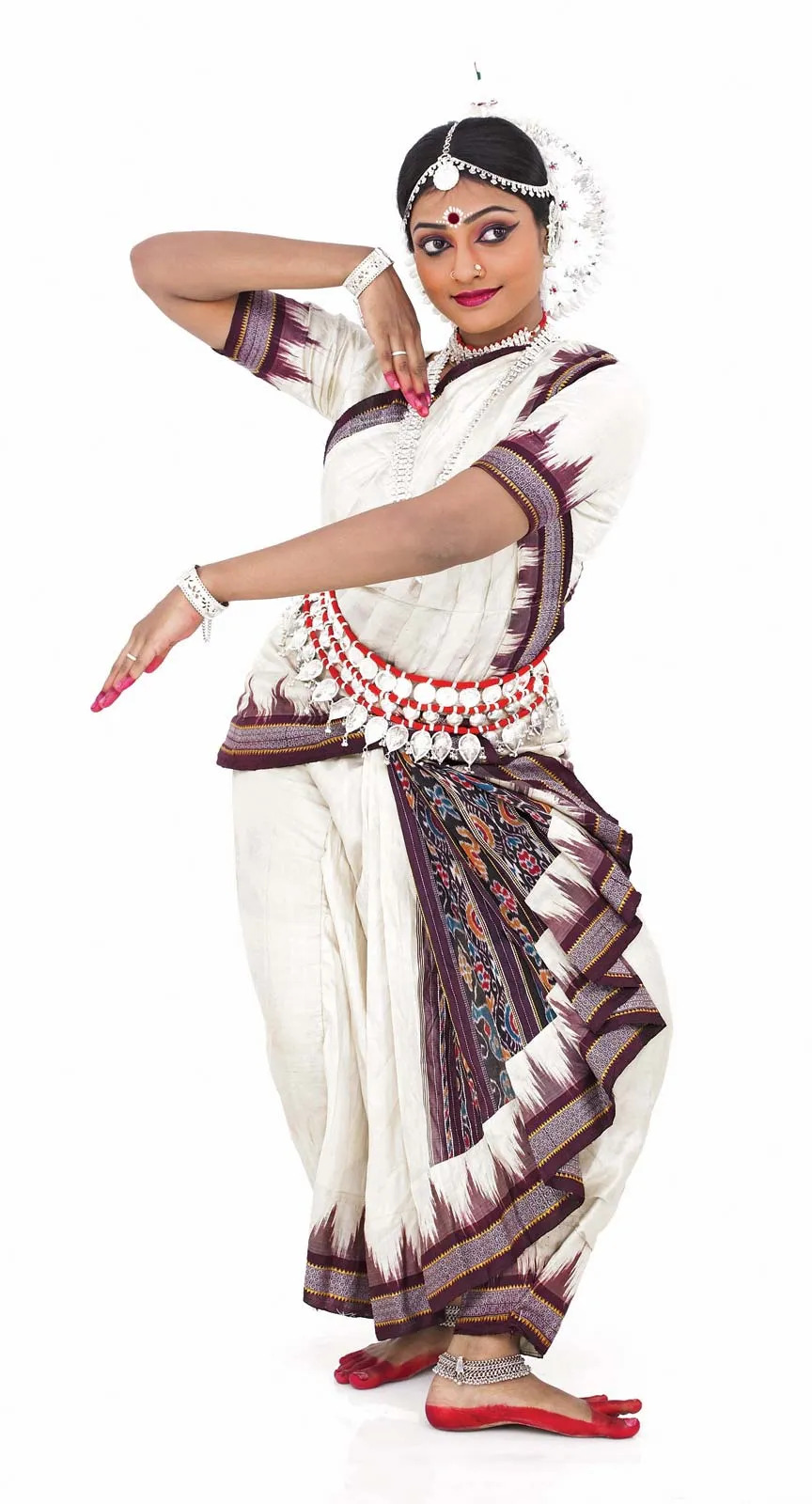
Dancer performing Indian classical odissi dance.
Odissi is indigenous to Orissa in eastern India. It is predominantly a dance for women, with postures that replicate those found in temple sculptures. Based on archaeological findings, odissi is belived to be the oldest of the surviving Indian classical dances. Odissi is a very complex and expressive dance, with over fifty mudras (symbolic hand gestures) commonly used.
Kuchipudi

Kuchipudi performance.
Unlike the other styles mentioned, kuchipudi requires talent in both dancing and singing. This dance, from the state of Andhra Pradesh in southeastern India, is highly ritualized, with a formalized song-and-dance introduction, sprinkling of holy water, and burning of incense, along with invocations of goddesses. Traditionally the dance was performed by men, even the female roles, although now it is predominantly performed by women.
Manipuri

Manipuri-style performance of Indian classical dance.
Manipuri comes from Manipur in northeastern India. It has its roots in that state’s folk traditions and rituals, and often depicts scenes from the life of the god Krishna. Unlike some of the other, more rhythmic dances, Manipuri is characterized by smooth and graceful movements. Female roles are especially fluid in the arms and hands, while male roles tend to have more forceful movements. The dance may be accompanied by narrative chanting and choral singing.
Kathak

Kathak school dancer, in Mughal costume, performing Indian classical dance.
A dance of northern India, Kathak is often a dance of love. It is performed by both men and women. The movements include intricate footwork accented by bells worn around the ankles and stylized gestures adapted from normal body language. It was originated by Kathakas, professional storytellers who used a mixture of dance, song, and drama. Like other Indian dances it began as a temple dance, but soon moved into the courts of ruling houses.
Kathakali

Kathakali dance
Kathakali comes from southwestern India, around the state of Kerala. Like bharatanatyam, kathakali is a religious dance. It draws inspiration from the Ramayana and stories from Shaiva traditions. Kathakali is traditionally performed by boys and men, even for female roles. The costumes and makeup are especially elaborate, with faces made to look like painted masks and enormous headdresses.
Bharatanatyam

Bharatanatyam performance
Bharatanatyam is a dance of Tamil Nadu in southern India. It traces its origins back to the Natyashastra, an ancient treatise on theatre written by the mythic priest Bharata. Originally a temple dance for women, bharatanatyam often is used to express Hindu religious stories and devotions. It was not commonly seen on the public stage until the 20th century. The dance movements are characterized by bent legs, while feet keep rhythm. Hands may be used in a series of mudras, or symbolic hand gestures, to tell a story.
6 Classical Dances of India | Britannica
38 notes
·
View notes
Photo
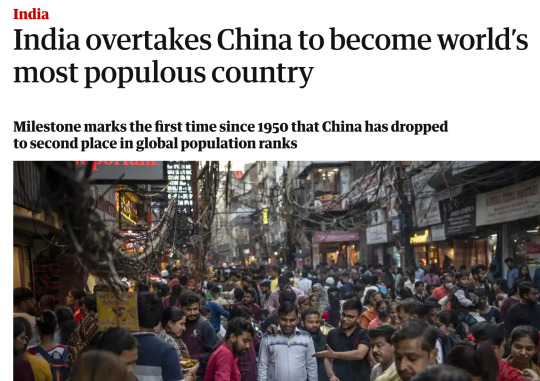
India overtakes China to become world’s most populous country (Hannah Ellis-Petersen, The Guardian, April 24 2023)
“It is also the first time since 1950, when the UN first began keeping global population records, that China has been knocked off the top spot.
China’s population decline follows decades of strict laws to bring the country’s booming birthrate under control, including the introduction of a one-child policy in the 1980s.
This included fines for having extra children, forced abortions and sterilisations.
While initially highly effective in controlling the population, these policies became a victim of their own success, and the country is now grappling with an ageing population in steep decline, which could have severe economic implications.
Part of the problem is that because of a traditional preference for boys, the one-child policy led to a massive gender imbalance.
Men now outnumber women by about 32 million. “How can the country now shore up birth rates, with millions of missing women?” asks Mei Fong, the author of One Child, a book about the impact of the policy.
Recent policies introduced in China trying to incentivise women to have more children have done little to stimulate population growth.
Women still have only 1.2 children and the population is expected to fall by almost 10% in the next two decades.
According to projections, the size of the Chinese population could drop below 1 billion before the end of the century.
In India, the population has grown by more than a billion since 1950. Though growth has now slowed, the number of people in the country is still expected to continue to rise for the next few decades, hitting its peak of 1.7 billion by 2064. (…)
India’s demography is far from uniform across the country.
One third of predicted population growth over the next decade will come from just two states, Bihar and Uttar Pradesh, in the north of the country, which are some of India’s poorest and most agricultural states.
Uttar Pradesh alone already has a population of about 235 million, bigger than Nigeria or Brazil.
Meanwhile states in India’s south, which is more prosperous and has far higher rates of literacy, population rates have already stabilised and have begun to fall.
In the next decade, states in the southern states such as Kerala and Tamil Nadu are likely to start grappling with an ageing population, and by 2025, one in five people in Kerala will be over 60.
The divide in population growth between India’s north and south could also have political implications.
After 2026, India’s electoral lines are due to be revised and redrawn based on census data, in particular relating to the number of people in constituencies.
Many politicians in southern states have expressed concern that their successes in bringing down population numbers, through education programmes, family planning and high literacy, could result in a reduction in their political representation in parliament, and a further political domination of the northern states that continue to have a population boom.
Currently the average age in India is just 29, and the country will continue to have a largely youthful population for the next two decades.
A similar “demographic dividend” proved highly useful in China, leading to an economic boom, particularly in manufacturing.
While India has one of the world’s fastest-growing economies in the world, and recently overtook the UK as the fifth-largest, experts have stressed that the country needs more investment in education and employment to seize the opportunity presented by a young population over the next few decades.
India continues to struggle with high youth unemployment and less than 50% of working-age Indians are in the workforce.
The figure for women is even lower, with just 20% of women participating in the formal labour market, a figure that is decreasing as India develops.”
71 notes
·
View notes
Text
Coco Cronus is Back with a Bang: A Breakdown of the Fiery New Track ‘Bxch I’m Back'
“Bxch I’m Back” is now streaming on YouTube!
Emerging hip-hop artists Coco Cronus, Typical in collaboration with Dopeboyghost for their debut album called “Back to Business" has just unleashed with their latest anthem song, “Bxch I’m Back,” on YouTube, marking a powerful return to the scene. Known for his bold lyrics and dynamic rage energy, Coco Cronus doesn’t hold back in this track, Dopeboyghost & typical delivering raw verses that highlight resilience, ambition, and an unapologetic attitude.
youtube
The song is a blend of hard-hitting beats and sharp lyricism, where Cronus takes listeners on a journey through his grind, personal growth, and the challenges he’s faced along the way. With references to his heritage and lifestyle, “Bxch I’m Back” showcases his ability to fuse storytelling with high-energy performances.
Fans have been quick to praise the song for its catchy hooks and relatable themes, making it an instant favorite among his growing audience. The music video, featuring vibrant visuals and high-energy cuts, complements the track’s intensity and adds another layer of artistry to the release.
“Bxch I’m Back” is now streaming on YouTube, with Cronus hinting at more projects in the pipeline. Whether you’re a longtime fan or new to his music, this track is a must-listen for anyone who appreciates authentic and hard-hitting hip-hop. This song captures the raw energy and determination of a young artist navigating life’s highs and lows. It reflects themes of ambition, resilience, and self-expression. The lyrics depict a fast-paced lifestyle, blending freestyle rap culture with personal introspection. The artist talks about grinding through challenges, maintaining loyalty to their crew, and staying focused on their goals despite external pressures.
Rooted in personal identity, the song mentions the artist’s Kerala heritage and how music has shaped their journey. There’s a juxtaposition of carefree moments, like embracing the “hakuna matata” mindset, with deeper struggles, like dealing with ego and finding direction. It’s a celebration of individuality, brotherhood, and the relentless pursuit of success, all set against the vibrant backdrop of Bangalore’s nightlife.
Dopeboyghost just landed back in the city and Coco Cronus have collaboration for an album called "Back in Business" following with "Luv is War" . Dopeboyghost, also known as DBG, is a versatile rapper originating from Kerala and now based in Bangalore, India. His music spans multiple genres and themes, often reflecting personal experiences, struggles, and his artistic journey. Known for a prolific output, he has released multiple albums and singles that resonate with fans of Indian hip-hop. Songs like “Street Knowledge” and “Alien” showcase his lyrical depth and ability to experiment with sound, carving out a unique identity in the indie music scene. You can explore his work on platforms like YouTube.
Coco Cronus is a DJ and music producer based in Bangalore, India, known for blending a variety of musical styles including electronic, trap, hip-hop, dubstep, hardstyle, and moombahton. His work showcases influences from prominent artists like XXXTentacion, Lil Wayne, Migos, Yellow Claw, and DJ Khaled.
Coco Cronus is recognized for his experimental approach to music production and performance, seamlessly combining diverse genres to create unique sounds. As an emerging artist in the Indian music scene, he continues to gain traction for his creativity and ability to resonate with a global audience.
Typi.cal aka Typical is a hip-hop artist known for his engaging rap style and meaningful lyricism. His work includes projects such as the album Typical Trouble, which showcases his creative soundscapes and storytelling abilities. The music highlights a balance between introspective themes and dynamic production, resonating with fans of contemporary rap.
Follow artists on social media:
DBG: https://www.instagram.com/dopeboyghost_/
Coco: https://www.instagram.com/coco_cronus/
Typical: https://www.instagram.com/typicalmusicog/
2 notes
·
View notes
Text








𝐌𝐚𝐧𝐧𝐞𝐪𝐮𝐢𝐧 𝐃𝐫𝐚𝐩𝐢𝐧𝐠 𝐒𝐞𝐬𝐬𝐢𝐨𝐧 𝐛𝐲 𝐅𝐚𝐬𝐡𝐢𝐨𝐧 𝐃𝐞𝐬𝐢𝐠𝐧 𝐒𝐭𝐮𝐝𝐞𝐧𝐭𝐬 𝐨𝐟 𝐖𝐚𝐯𝐞𝐬 𝐈𝐧𝐬𝐭𝐢𝐭𝐮𝐭𝐞 𝐨𝐟 𝐅𝐚𝐬𝐡𝐢𝐨𝐧 𝐃𝐞𝐬𝐢𝐠𝐧𝐢𝐧𝐠
Get a glimpse of the creativity & talent of our Fashion Designing Students! Check out these stunning photos from our Mannequin Draping Sessions conducted over the past few years. Witness the fusion of colors, fabrics, and designs as our talented students breathe life into Mannequins, creating extraordinary fashion ensembles. Join WIFD to unleash your own creativity and become a part of our vibrant community of fashion enthusiasts. Don't miss out on this opportunity to turn your passion into a career…!
𝐕𝐢𝐞𝐰 𝐦𝐨𝐫𝐞 Mannequin Draping 𝐏𝐡𝐨𝐭𝐨𝐬 & 𝐕𝐢𝐝𝐞𝐨𝐬
#fashion designing#mannequin draping#creativity unleashed#fashion design#fashion inspiration#creative expressions#mannequin magic#fashion artistry#draping magic#fashion institute#school of fashion#fashion academy#kozhikode#kerala#calicut#wifd
0 notes
Text
Viral video: Mascot dressed as elephant groooves to ‘Kaavaalaa’, internet is impressed
A viral video from Kerala depicts what appears to be a dancing elephant, captivating social media users. However, viewers soon realize it's a man in an elephant costume, dancing to a popular Rajinikanth song.
A video capturing the mesmerizing dance moves of what appeared to be an elephant in Kerala has set social media abuzz. The clip, which circulated widely across platforms like Reddit and Instagram, showcased the "elephant" grooving to the popular Rajinikanth song, ‘Kaavaalaa,’ much to the amazement of viewers.
Despite the large crowd surrounding the dancing figure, many were astonished to discover that it was not a real elephant but a person clad in an elephant costume. The costume was so meticulously crafted that it seamlessly mimicked the movements of the majestic creature, adding an element of whimsy and entertainment to the streets of Kerala.
The chosen song, ‘Kaavaalaa,’ hails from the acclaimed Rajinikanth movie ‘Jailer,’ featuring renowned actress Tamannaah Bhatia. The combination of the catchy tune and the skillful choreography captivated audiences, leading to millions of views and widespread discussion on social media platforms.
Among the flood of comments, a recurring theme emerged as viewers grappled with the realization that the dancing elephant was, in fact, a human performer. Some expressed awe at the level of realism achieved, while others voiced concerns about potential animal abuse, unaware of the costume's true nature.
"I thought it was real," remarked one bewildered viewer, echoing the sentiments of many who initially mistook the performance for genuine wildlife footage.
#kerala#viral video#india#tamil#malayalam#tamilnadu#photography#book quotes#seventeen#cottagecore#goth#makeup#avatar the last airbender#book qoute#trending#love#wildlife#wild animals
6 notes
·
View notes
Text
Capturing Timeless Moments: The Evolution of Polaroid Photography at Trivandrum’s Premier Studio
In the bustling heart of Kerala’s capital, Trivandrum, a quiet revolution has been taking place in the world of photography. Since 2013, one studio has stood as a beacon of innovation and nostalgia, bringing the classic charm of Polaroid shots to life and establishing itself as the epitome of the finest photography in the region. This is the story of how this studio has become a trendsetter and a beloved institution in Kerala’s vibrant photography scene.
A Legacy of Classic Charm
When digital photography began to dominate the market, many believed that traditional film photography, particularly Polaroid, was on the verge of extinction. However, the Trivandrum-based studio defied this trend by embracing and revitalizing Polaroid photography, offering a unique blend of vintage elegance and contemporary flair.
Since its inception in 2013, the studio has made a name for itself by specializing in Polaroid photography. Known for its instant prints and distinctive aesthetic, Polaroid photography captures moments with a timeless quality that digital images often lack. Each Polaroid shot is a tangible piece of art, marked by its distinctive border and slightly unpredictable color palette, making every image a one-of-a-kind creation.
Why Polaroid Photography?
Polaroid photography offers a tactile experience that digital photography cannot replicate. The immediate gratification of holding a photo moments after it’s taken, combined with the unpredictable nature of Polaroid film, creates a sense of spontaneity and nostalgia. The studio’s decision to focus on Polaroid photography stems from a desire to offer something unique in a digital world, providing clients with a memorable and personal experience.
Furthermore, Polaroid photography brings a certain authenticity to the process. Each image, while sometimes imperfect, captures genuine emotions and moments, making it particularly cherished in a world where perfection often overshadows authenticity. This quality resonates deeply with clients seeking a more intimate and personal connection to their memories.
A Studio Like No Other
The Trivandrum studio has not only embraced Polaroid photography but has also cultivated an environment that celebrates it. Walking into the studio, visitors are greeted with a warm, retro ambiance that perfectly complements the Polaroid aesthetic. The interior is adorned with vintage cameras, classic photographic equipment, and walls adorned with Polaroid prints from past sessions, creating an immersive experience that feels both nostalgic and innovative.
The studio’s team consists of highly skilled photographers who are passionate about the art of Polaroid photography. Each photographer brings their unique style and expertise, ensuring that every client receives a personalized experience. The team’s deep understanding of Polaroid film’s quirks and nuances allows them to create stunning images that capture the essence of their subjects.
The Experience: More Than Just a Photo
One of the studio’s standout features is its commitment to offering more than just a photo. Clients are invited to participate in a creative process that makes each session unique. Whether it’s a family portrait, a couple’s engagement shoot, or an individual’s artistic session, the studio’s photographers work closely with clients to bring their visions to life.
During a typical session, clients have the opportunity to select from a range of backgrounds and props that complement their style and preferences. The studio also offers guidance on poses and expressions, ensuring that each Polaroid captures genuine emotions and interactions. This personalized approach ensures that every session is a unique and memorable experience.
A Hub for Creativity and Community
Beyond its photography services, the studio has become a vibrant hub for creativity and community engagement. Over the years, it has hosted various workshops and events that celebrate the art of Polaroid photography and encourage local talent. These events have ranged from hands-on Polaroid workshops to exhibitions showcasing the work of emerging photographers.
The studio’s commitment to fostering a sense of community is evident in its collaborations with local artists and organizations. By supporting and promoting local talent, the studio has played a significant role in enriching Trivandrum’s cultural landscape. This dedication to community building has solidified the studio’s reputation as a cornerstone of Kerala’s creative scene.
Client Testimonials: A Testimony to Excellence
The studio’s reputation for excellence is reflected in the glowing testimonials of its clients. Many have praised the studio for its exceptional service, creative approach, and the ability to capture moments in a way that feels both authentic and artistic. Here are some comments left by customers:
Priya Nair, a local artist, described her experience: “The studio’s Polaroid sessions are like a magical journey into the past. They manage to capture the essence of a moment with such beauty and authenticity. It’s not just a photo; it’s a piece of art.”
Rajesh and Meera, a couple who celebrated their anniversary with a Polaroid session, shared: “We wanted something special to commemorate our years together, and the studio delivered beyond our expectations. The photos are stunning, and the entire experience was incredibly personal and memorable.”
Anil Kumar, a business owner who used the studio for promotional photos, commented: “The studio’s Polaroid shots have added a unique touch to our brand. The team’s professionalism and creativity are second to none. We couldn’t be happier with the results.”
Looking Ahead: The Future of Polaroid Photography
As we move further into the digital age, the Trivandrum studio remains steadfast in its commitment to Polaroid photography. The studio continues to innovate while honoring the timeless charm of this classic medium. Plans for the future include expanding their range of services, introducing new Polaroid film options, and continuing to engage with the local community through creative initiatives.
The studio’s dedication to preserving and celebrating the art of Polaroid photography ensures that it remains a vital part of Kerala’s cultural fabric. As technology advances and trends evolve, the studio’s focus on creating genuine, artistic, and memorable experiences will continue to set it apart.
In conclusion, the Trivandrum studio has not only redefined the art of Polaroid photography but has also created a space where creativity, nostalgia, and community come together. Since 2013, it has established itself as a leader in Kerala’s photography scene, offering clients a unique and cherished way to capture and remember their most precious moments. Whether you’re seeking a classic portrait, an artistic shot, or a memorable experience, this studio promises to deliver with a touch of timeless elegance and contemporary flair.
2 notes
·
View notes